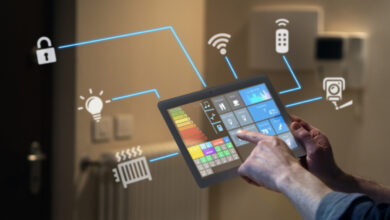Correctional facilities need security locks to ensure order and safety. These locks are complicated mechanisms that can withstand tampering, picking, and physical force. Prison security locks have evolved from mechanical to electronic and biometric systems as security and technology have changed.
Mechanical locks dominated jail security early on. Physical keys made these locks effective. However, they were vulnerable. Copycat keys or skilled inmates could hack these locks. These locks were simple and vulnerable to brute force attacks. This security gap prompted the development of more complex locking methods.
Electronic locking mechanisms improved prison security. Computer-controlled locks were remote-operated. This reduced the risk of manual key handling by locking and unlocking doors from a central control room. Electronic locks combined with CCTV cameras and alarms improved jail security. However, these systems had drawbacks. They needed reliable electricity and were vulnerable to technological failures and hackers.
The latest prison locks use biometrics. Biometric locks control access with fingerprints or retinal scans. Since these unique biological qualities are hard to copy, this technique is secure. Biometric systems can also log who entered a space and when increasing security and accountability. However, biometric systems are costly and need complex upkeep, making them unsuitable for some locations.
Prison locks need frequent maintenance and upgrading. Correctional facilities must evaluate and modify their locking systems as technology advances. This requires regular staff training to operate and troubleshoot modern locks. It also requires keeping up with security threats and protecting locking systems from new hacking attempts.
Humans are essential to jail lock operations. These systems must be used and maintained by trained security professionals. Their alertness and knowledge of locking mechanisms are essential for security and breach response. Regular drills and training on new security threats and lock technology keep these people ready.
Prison locks must also balance security, ethics, and law. The locks must protect inmates’ rights and safety. In fire crises, locks should be overrideable for safe evacuation. Compliance with prisoner treatment and safety laws is crucial.
The future of prison security locks may involve more technology. Lock systems that can predict and respond to security breaches may improve using AI and ML. These modern technologies and robust mechanical systems will make prisons safe and compassionate.
Overall, prison security locks are essential to correctional facility security. Security issues change as mechanical equipment becomes electronic and biometric systems. Balancing innovative technology with reliability, cost-effectiveness, and ethics will ensure facility security and the rights and safety of individuals inside.
Reinventing Security: Prison Locks in Modern Correctional Facilities
Locks that secure cells and facilities define jail security. These complex technologies provide optimum security and control, not just door locks. Prison locks have evolved from mechanical to electronic and biometric systems, reflecting technical advances and the need for stronger security.
Prisons initially used mechanical locks, which were sturdy but vulnerable. Inmates may learn and use lock picking because these locks are mechanical. Physical keys were vulnerable to theft or copying, compromising the security system.
Electronic locking systems revolutionized jail security. These solutions eliminated physical keys, decreasing key management concerns. From a central control room, prison staff might remotely operate electronic locks. This centralized control improves security and inmate mobility efficiency.
However, electronic locks have drawbacks. They need a steady power source, and electrical failures might undermine security. These systems also need regular maintenance and updates to prevent cybersecurity risks, unlike conventional locks.
Recent jail security innovations include biometric locking mechanisms. These advanced technologies give access via fingerprints, iris patterns, or facial recognition. These biometric IDs are highly secure due to their individuality. These systems also log access, giving an audit trail that is crucial in a prison.
Biometric systems in prisons are difficult to implement. Many institutions cannot afford such complex technologies’ installation and maintenance. Biometric systems can also make erroneous rejections or acceptances, needing backup security.
All prison locks need regular maintenance and updates. Electronic and biometric systems need software updates and hardware maintenance, while mechanical locks need frequent checks for tampering. Locks need this maintenance to work properly and stay current on security threats.
Humanity is crucial to prison lock management. Correctional officials need lock system operating and troubleshooting training. They are essential to lock and prison security. Staff need regular training and updates on new technologies and practices.
Prison lock management requires balancing security and ethics. Evasion and unauthorized entry are the main concerns, but convicts’ rights and safety must also be considered. Fires and natural calamities require methods for safe and speedy evacuation.
Technology and mechanical reliability will shape prison security locks. Artificial intelligence and machine learning may make locks smarter and more responsive. These technologies may predict and respond to security threats, improving correctional facility security.
Overall, prison security locks have progressed from mechanical to electronic and biometric devices. This progression shows how prisons must adapt to technological advances and shifting security concerns while maintaining strong security. The mix of technology, maintenance, training, and ethics is crucial to prison security lock management. Technology will improve the capability and complexity of these jail security components.
For more valuable information visit our website.





